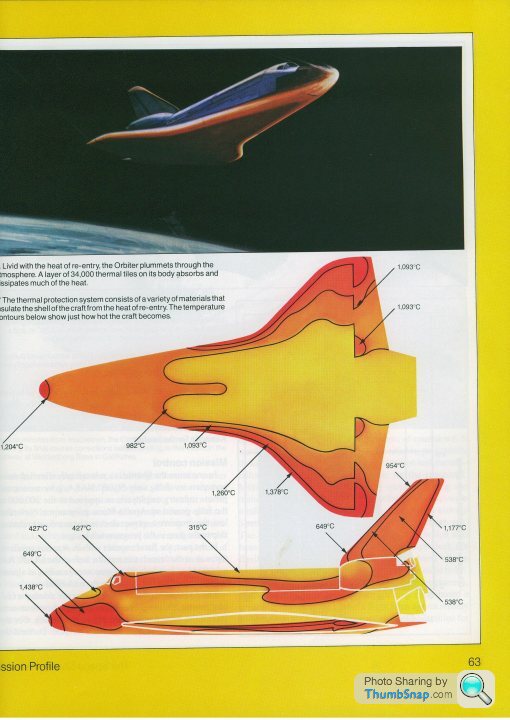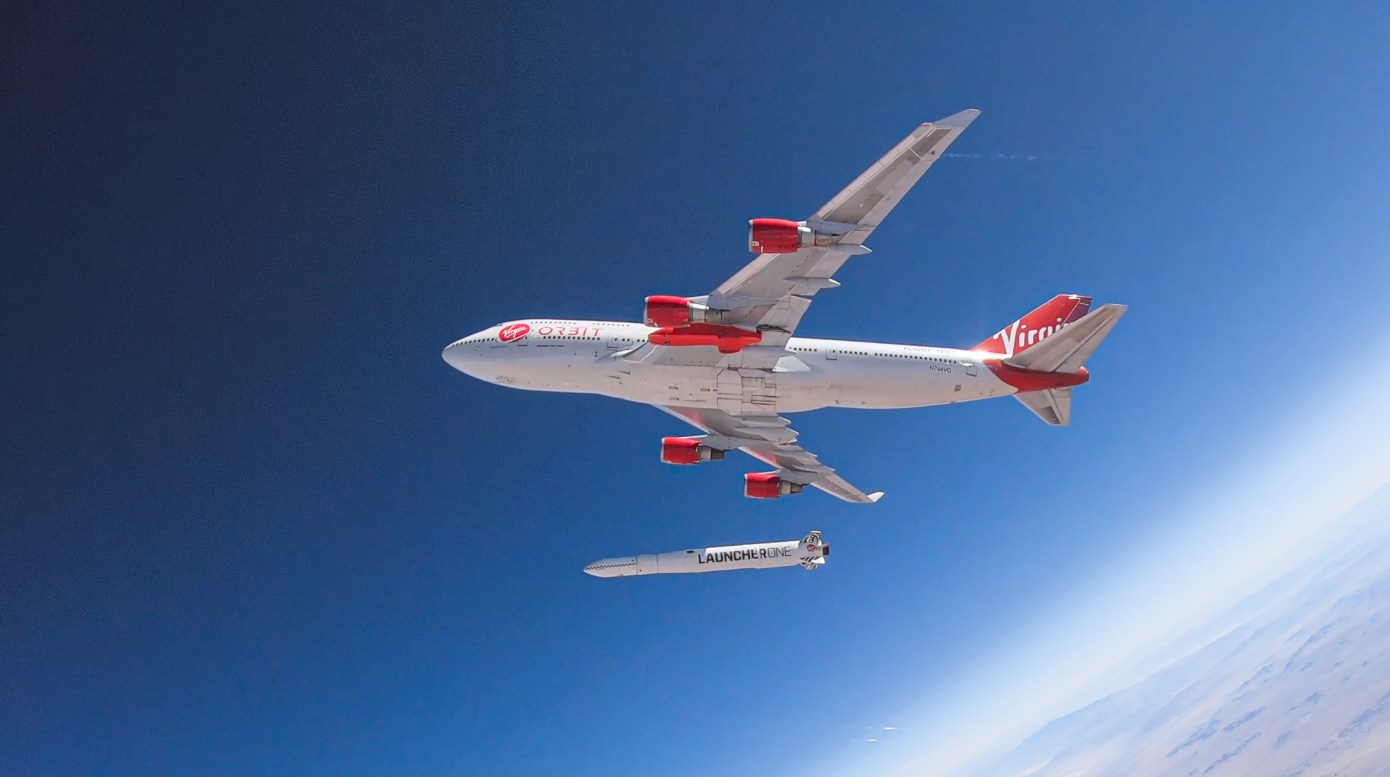Virgin Galactic
Discussion
Flooble said:
Yes, it's much bigger than SpaceShipOne, but that is more that SpaceShipOne was tiny; it's not that big (10 tonnes is still 50% less than the X-15). And the performance is pretty much identical to SpaceShipOne.
Are you criticising Spaceship Two because it is LIGHTER than an X-15. I thought that would be looked on as a positive.Even though Spaceship Two emulates some aspects of what the X-15 did, it is every different type of craft designed to fly a very different flight profile.
First of all, the X-15 was a pure research vehicle which was designed to test out a number of criteria that are not needed in Spaceship Two.
It's two main flight objectives were that it was that it was hoped it would be able to reach Mach 7 to 8 at relatively "low" altitudes i.e under 200,000 feet (under 40 miles). This would entail very high heating levels which meant that the craft could not be built from lightweight materials. Consequently, aluminium was out (and carbon composites did not really exist in 1955-58 when the X-15 was being designed). It was therefore mostly built from a very tough form of steel known as Inconel X. Consequently, it ended up being a very heavy, dense machine.
The second main flight criteria was to be able to soar to altitudes of over 300,000 feet (57 miles). This was a secondary objective to the high speed flights and made up relatively few of the 199 flights undertaken by the three X-15s built.
From the mid 1960s, the X-15 had more or less achieved most of the goals that had been envisaged for it in 1955 although the maximum speed achieved in the programme was "only" Mach 6.7 - a bit below what had been hoped.
Most of the flights undertaken after 1964/65 were using the X-15s as instrument carriers in order to test equipment in the vacuum of space or above most of the atmosphere, such as infra-red telescopes, satellite trackers, missile trackers etc. It became a real practical workhorse in an era when the ability and opportunity to put such equipment into orbit was still limited. It became, in effect, a manned, sub-orbital, sounding rocket.
Spaceship Two is a very different animal. There is no requirement for very high Mach number, low altitude flights (under 200,000 feet). Therefore, heat protection is not such an issue as in the X-15. It also has the benefit of massive advances in materials technology in the almost 70 years since planes like the X-15 were being envisaged. The main advance in materials has been the availability of composites, and this, on its own, accounts for the big weight savings possible. At no point does the top speed of Spaceship Two exceed much above Mach 3 - so aerodynamic heating is kept to a minimum.
The re-entry profile for Space Ship is markedly different to that of the X-15. The X-15 was deliberately flown into the denser atmosphere in order to generate airframe heating. Space Ship Two does the complete opposite as its descent profile is designed to minimse airframe heating.
rustyuk said:
Not really, most leisure industries don't require people to risk their lives.
"Most" leisure activities are relatively low risk - but there are PLENTY of leisure activities that have plenty of risk. Indeed, it's the element of risk that makes them attractive. And there are PLENTY of people willing to take those risks.You can experience Zero G on a roller coaster, or a Cessna, or driving fast over a hump back bridge.
The issue is the duration. The higher you are, the longer the experience lasts. On "vomit comet" type Zero G trainer aircraft, you will be lucky to get about 30 seconds. If you do one of these Virgin or New Shepard sub-orbital flights, you will get 2 to 5 minutes. In orbit or travelling through space, of course, you will experience Zero G pretty much indefinitely.
The issue is the duration. The higher you are, the longer the experience lasts. On "vomit comet" type Zero G trainer aircraft, you will be lucky to get about 30 seconds. If you do one of these Virgin or New Shepard sub-orbital flights, you will get 2 to 5 minutes. In orbit or travelling through space, of course, you will experience Zero G pretty much indefinitely.
bmwmike said:
Would the re-entry have had flames at the front and been really bouncy, or just gently dropped back into atmosphere like that video seems to show? I dont see any sick bags either 
Neither the New Shepard capsule nor the Virgin Spaceship 2 are travelling fast enough during re-entry to generate significant heat. Consequently, neither are fitted with a specific heatshield. They would not survive re-entry from orbit.
When a craft is coming in from orbit, it hits the upper atmosphere at 17,500 mph (Mach 22) This causes the air ahead of the craft to compress and heat up to over 3,000 degrees C in some places on certain types of spacecraft. Here is a heat distribution diagram for the Space Shuttle -

Spacecraft coming back from the moon or other parts of the solar system will impact the upper atmosphere at speeds of around 25,000 mph which generates even higher re-entry temperatures.
bmwmike said:
Interesting; thanks both. I honestly didn't realise that but it makes sense. Probably my next question would have been why not just slow down before hitting atmos (for the Shuttle et al) but presumably cheaper, lighter, and safer to engineer for the high speed re-entry in the first place (less fuel, less to go wrong, perhaps).
As for vomit in microgravity, again, didn't really think of that - imagine one person getting sick and it floats around, or triggers everyone else to get sick. Quite amusing thinking of the rich folk all trying desperately to "swim" away from the approaching vomit cloud.
For the Space Shuttle (or any other orbiting spacecraft) to slow down to a more reasonable speed to avoid re-entry heating, it would need to use retro rocket firings to slow down, in space, from 17,500 mph to around 3,000 mph (at least). Imagine the amount of fuel that would be needed together with the weight of that fuel and the size of the tanks to achieve that. It would be almost as much as was needed to get the spacecraft up to orbital speed in the first place.As for vomit in microgravity, again, didn't really think of that - imagine one person getting sick and it floats around, or triggers everyone else to get sick. Quite amusing thinking of the rich folk all trying desperately to "swim" away from the approaching vomit cloud.
Edited by bmwmike on Thursday 15th July 11:50
And, on top of that, all that additional fuel and weight required for the re-entry burn would have had to be lifted into space and orbital velocity in the first place - so the initial launch vehicle would have been impossibly huge. It's much better to use a fairly small amount of re-entry fuel for a fairly small reduction in orbital velocity and use the atmosphere to do the braking for you.
hyphen said:
Concorde threatened to break the ground, and they canned it 
Concorde poked through some ground that nobody in the airline business was that interested in breaking - at that time.
Breakthroughs don't always lead to a valid, worthwhile or commercially viable technology. The "Graf Zeppelin" was a bit of a breakthrough in airship technology.
jingars said:
Working on it - give it time.

I love me a bit of space tech, but I struggle to position Virgin Galactic as anything other than space tourism for high rollers - and that's fine with me.
I am only an armchair expert, but I see nothing in the technology deployed which can act as a platform to move to orbital flight, or indeed point-to-point sub-orbital flight for the ultra-rich to traverse the globe.
The same broadly holds for New Shepard, with the potential for the experience gained in landing the first stage being informative for New Glenn, and the engine from Shepard being used in the upper stage of Glenn.
Not every craft is designed to be or is supposed to be a "breakthrough". 
I love me a bit of space tech, but I struggle to position Virgin Galactic as anything other than space tourism for high rollers - and that's fine with me.
I am only an armchair expert, but I see nothing in the technology deployed which can act as a platform to move to orbital flight, or indeed point-to-point sub-orbital flight for the ultra-rich to traverse the globe.
The same broadly holds for New Shepard, with the potential for the experience gained in landing the first stage being informative for New Glenn, and the engine from Shepard being used in the upper stage of Glenn.
We are now moving into the commercial exploitation of space related technology and propulsion systems rather than using the technology just for experimental, explorative or military purposes. The research and development has largely been done. Having said that, Virgin , New Shepard and SpaceX have all made significant advances in certain areas of rocket propulsion that had not been tried before by other spacecraft and rocket designers - so there is an element of "breakthrough" from a technical point of view.
RizzoTheRat said:
Are Virgin working on an orbital system, I don't think they're involved in Statolaunch are they?
Because they launch at altitude and don't have anything like the amount of gravity losses a conventional rocket has, it doesn't actually need much dV for a sub orbital flight. Blue origin need around 2-3 times more dV than New Shepherd to make orbit, I wouldn't be surprised if Virgin need to increase theirs by a factor of 10 or more.
Yes they are - but currently for smaller unmanned satellites. They've had two successful satellite launches so far - Because they launch at altitude and don't have anything like the amount of gravity losses a conventional rocket has, it doesn't actually need much dV for a sub orbital flight. Blue origin need around 2-3 times more dV than New Shepherd to make orbit, I wouldn't be surprised if Virgin need to increase theirs by a factor of 10 or more.


No stated ambitions at this point. Indeed, apart from SpaceX and the Russians, nobody else is in a position to offer rides to non-essential passengers on orbital flights. The Chinese could but will not allow it at the moment.
We are a few years away from tourist orbital flights.
For orbital flight you need a booster in the 1 million pound thrust category - at least. That means, at the moment, a Soyuz rocket (R-7) a Falcon 9, a Long March 4 or an Atlas V.
Orbital flight requires the ability to boost the payload to a speed of 17,500 mph. That sets the minimum size of the rocket.
We are a few years away from tourist orbital flights.
For orbital flight you need a booster in the 1 million pound thrust category - at least. That means, at the moment, a Soyuz rocket (R-7) a Falcon 9, a Long March 4 or an Atlas V.
Orbital flight requires the ability to boost the payload to a speed of 17,500 mph. That sets the minimum size of the rocket.
Toaster said:
Eric Mc said:
The usual old tripe.
indeed its a vacuous endevour a view which is valid and held by many.... By the way, there are two recognised ways of spelling "endeavour"( endeavour/endeavor) - neither of which you used

To be honest, people are getting a bit hung up on what the expression "astronaut" actually means.
All through Mercury, Gemini and Apollo, anybody who was selected to be an astronaut was called an astronaut, whether they had flown in space or not. They tended to refer to unflown astronauts as "rookie astronauts" although that description was extremely unofficial. What they did do was give newly selected astronauts a silver "wings" badge which was replaced by a gold badge once they had made a spaceflight.
Things changed a bit with the arrival of the Space Shuttle because now, with crews of up to seven (as opposed to a maximum of three on Apollo) the number of people carried on each flight was going to rocket (sorry). There was also the dilemma of whether non-pilot astronauts were genuine astronauts as the Shuttle would carry scientists and engineers on board, many who couldn't fly a balsa wood glider let alone a highly complex spaceplane.
In the end, NASA decided that everyone who flew on a Shuttle would be referred to as an astronaut, even those who were making one -off flights, such as the odd senator or school teacher
What they did do was change the definition of unflown "astronauts". They became officially "Astronaut Candidates" - shortened (in the usual NASA style) to an abbreviation - Ascans.
With the arrival of fare paying passengers travelling into space, it is really silly to refer to space passengers as "astronauts" - any more than it would sound stupid if everybody who travelled on an aeroplane was called a "pilot" or everybody who travelled on a ship was called a "sailor".
All through Mercury, Gemini and Apollo, anybody who was selected to be an astronaut was called an astronaut, whether they had flown in space or not. They tended to refer to unflown astronauts as "rookie astronauts" although that description was extremely unofficial. What they did do was give newly selected astronauts a silver "wings" badge which was replaced by a gold badge once they had made a spaceflight.
Things changed a bit with the arrival of the Space Shuttle because now, with crews of up to seven (as opposed to a maximum of three on Apollo) the number of people carried on each flight was going to rocket (sorry). There was also the dilemma of whether non-pilot astronauts were genuine astronauts as the Shuttle would carry scientists and engineers on board, many who couldn't fly a balsa wood glider let alone a highly complex spaceplane.
In the end, NASA decided that everyone who flew on a Shuttle would be referred to as an astronaut, even those who were making one -off flights, such as the odd senator or school teacher

What they did do was change the definition of unflown "astronauts". They became officially "Astronaut Candidates" - shortened (in the usual NASA style) to an abbreviation - Ascans.
With the arrival of fare paying passengers travelling into space, it is really silly to refer to space passengers as "astronauts" - any more than it would sound stupid if everybody who travelled on an aeroplane was called a "pilot" or everybody who travelled on a ship was called a "sailor".
Gassing Station | Science! | Top of Page | What's New | My Stuff



